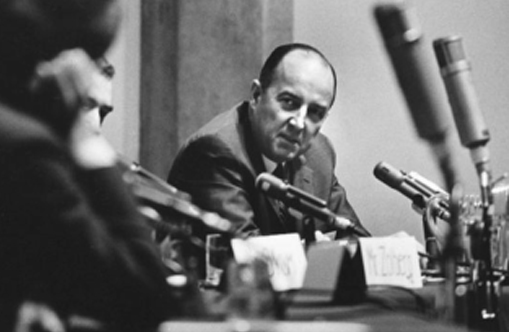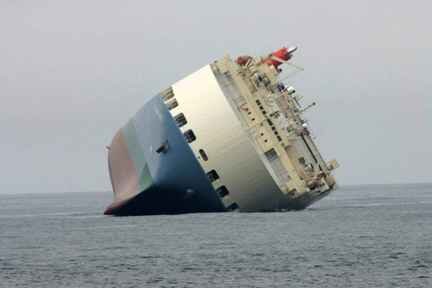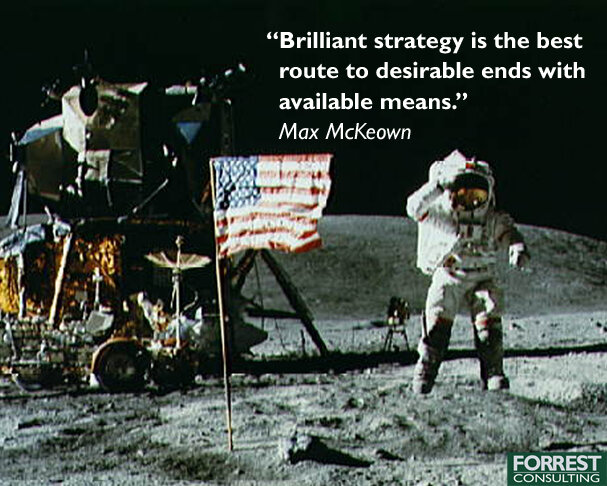
Strategic Thinking & Strategic Action
Fostering strategic thinking and strategic action by organizational leaders since 2007.
Archive
- March 2025
- February 2025
- January 2025
- December 2024
- November 2024
- October 2024
- August 2024
- July 2024
- June 2024
- May 2024
- April 2024
- February 2024
- January 2024
- December 2023
- November 2023
- October 2023
- July 2023
- August 2021
- April 2021
- March 2021
- February 2021
- November 2020
- October 2020
- September 2020
- July 2020
- June 2020
- May 2020
- March 2020
- October 2019
- September 2019
- July 2019
- April 2018
- January 2018
- December 2017
- November 2017
- October 2017
- September 2017
- August 2017
- January 2017
- December 2016
- November 2016
- October 2016
- September 2016
- August 2016
- February 2016
- October 2015
- March 2015
- November 2014
- October 2014
- September 2014
- July 2014
- May 2014
- March 2014
- February 2014
- December 2013
- September 2013
- August 2013
- March 2013
- February 2013
- December 2012
- October 2012
- June 2012
- May 2012
- March 2012
- February 2012
- January 2012
- December 2011
- November 2011
- October 2011
- September 2011
- August 2011
- June 2011
- May 2011
- April 2011
- March 2011
- February 2011
- April 2010
- October 2009
- June 2009
- May 2009
- April 2009
- March 2009
- February 2009
- May 2008
- February 2008
- August 2007
-
Action-oriented bias
- Nov 17, 2017 Trump trap: Action-oriented bias Nov 17, 2017
-
Approach-avoidance
- Sep 21, 2016 Approach or avoid? Sep 21, 2016
-
Bell curve bias
- Mar 28, 2020 We are biased by the bell curve Mar 28, 2020
-
Choice
- Oct 5, 2016 Managing choice Oct 5, 2016
-
Coaching
- Jan 7, 2025 Pick the best: Don’t let the bad drive out the good Jan 7, 2025
- Jan 22, 2024 Coaching and change Jan 22, 2024
- Apr 1, 2021 Let’s not be complacent about our ignorance! Apr 1, 2021
- Mar 10, 2021 So much can go wrong. Here’s how to make it go right. Mar 10, 2021
- Mar 10, 2021 Why settle? Go for the gold! Mar 10, 2021
- Mar 10, 2021 It's time for spring training. Are you ready to play on the A Team? Mar 10, 2021
-
Consensus
- Dec 6, 2016 No consensus for consensus Dec 6, 2016
-
Decision biases cases
- Oct 19, 2020 Short-sighted thinking: The case of the “hot new smartphone” Oct 19, 2020
- Sep 10, 2020 Changing our thinking to feel better. Yes, we do that! Sep 10, 2020
- Oct 24, 2019 Remember, history is written by the survivors Oct 24, 2019
- Oct 22, 2019 Beliefs about a group matter Oct 22, 2019
- Oct 15, 2019 Not knowing we don’t know Oct 15, 2019
- Sep 19, 2017 Case 12: Not missing the opportunity to lose billions Sep 19, 2017
- Aug 29, 2017 Case 11: Getting bitten by not seeing it Aug 29, 2017
- Aug 29, 2017 Case 10: When what worked didn’t work Aug 29, 2017
- Aug 28, 2017 Case 9: The climbers who perished by succeeding Aug 28, 2017
- Aug 28, 2017 Case 8: No accounting for incompetence Aug 28, 2017
- Aug 16, 2017 Case 7: Blind or incompetent? Perhaps both… Aug 16, 2017
- Aug 16, 2017 Case 6: Seeing what he wanted to see Aug 16, 2017
- Aug 13, 2017 Case 5: Getting burned by past successes Aug 13, 2017
- Aug 2, 2017 Case 4: I’m the boss, so I am right! Aug 2, 2017
- Aug 2, 2017 Case 3: The experts were wrong Aug 2, 2017
- Aug 2, 2017 Case 2: The battle that didn’t go as expected Aug 2, 2017
- Dec 12, 2016 Failure without facilitation: The French Canal Disaster Dec 12, 2016
- Oct 26, 2015 Decision traps, flaws and fallacies: Learn from my unexpected big decision Oct 26, 2015
-
Decision making
- Nov 6, 2024 Rise of the poker pros: 10 lessons for great success Nov 6, 2024
- Jan 5, 2024 What’s your magic number? Jan 5, 2024
- Oct 9, 2023 AI revisited: Will it ever make perfect decisions? Oct 9, 2023
- Sep 4, 2019 “The instant of decision is madness” Sep 4, 2019
- Apr 23, 2018 Despite our growing ignorance, we must decide Apr 23, 2018
- Apr 12, 2018 Can “Big Data” deliver “the right decision”? Apr 12, 2018
- Jan 18, 2018 The worst accident: “We’re going!” Jan 18, 2018
- Mar 8, 2015 10 surprising mental traps: Why we make bad decisions Mar 8, 2015
- Mar 10, 2014 Often wrong but never in doubt Mar 10, 2014
-
Decision making biases
- Mar 10, 2021 So much can go wrong. Here’s how to make it go right. Mar 10, 2021
-
Evidence
- Dec 16, 2016 Misuse of evidence can zap your strategy Dec 16, 2016
-
Evolution
- Aug 6, 2016 Smart phones on the savannah Aug 6, 2016
-
Gratitude
- Oct 25, 2017 Thank you for our connection Oct 25, 2017
-
Group decisions
- Nov 15, 2016 #2 error: Not using the group advantage Nov 15, 2016
- Oct 22, 2015 Open up your thinking: Make better decisions in a group process Oct 22, 2015
-
Leadership
- Nov 14, 2016 #1 error: The leader problem Nov 14, 2016
- Feb 1, 2016 Leaders who mislead: A tale of two movies Feb 1, 2016
-
Pre-mortem
- Sep 12, 2016 Thinking “as if” Sep 12, 2016
-
Risk
- Jun 9, 2020 The Black Swan and us Jun 9, 2020
- Jan 10, 2017 The risk of ignoring risk Jan 10, 2017
- Oct 14, 2016 Risk and regret Oct 14, 2016
-
Strategic planning
- Jan 4, 2025 California High Speed Rail to nowhere: Lessons for implementing our plans Jan 4, 2025
- Dec 17, 2024 Why New Year’s resolutions fail: The problem of implementation Dec 17, 2024
- Nov 10, 2024 Are you ready to bat? Nov 10, 2024
- Oct 9, 2024 Drift and big change challenge our success Oct 9, 2024
- Aug 19, 2024 Get real when you plan! Aug 19, 2024
- Apr 10, 2024 Bridge the strategy gap Apr 10, 2024
- Feb 23, 2024 Don't waste your time planning, unless... Feb 23, 2024
- Dec 18, 2023 The secret sauce of successful plan implementation Dec 18, 2023
- Nov 20, 2023 How to build commitment to change, revisited Nov 20, 2023
- Oct 3, 2023 Success Starts With a Big Vision Oct 3, 2023
- Aug 24, 2021 Sometimes you get what you need Aug 24, 2021
- Feb 25, 2021 Do you measure up? Feb 25, 2021
- Jul 28, 2020 Forget business as usual Jul 28, 2020
- Oct 9, 2014 What’s driving your organization? Oct 9, 2014
- Feb 20, 2014 This is not an infomercial Feb 20, 2014
- Feb 11, 2014 The Big Fail Feb 11, 2014
- Mar 12, 2013 Parsimony and planning Mar 12, 2013
-
Strategic thinking
- Feb 11, 2025 What to do when disaster ensues Feb 11, 2025
- Feb 27, 2024 Desirable difficulties Feb 27, 2024
- Jan 13, 2024 Business model question: Produce or provide? Jan 13, 2024
- Jan 5, 2024 What’s your magic number? Jan 5, 2024
- Jul 5, 2023 Think wide to succeed: How will you compete? Jul 5, 2023
- Mar 25, 2014 Flight 370 and strategic thinking Mar 25, 2014
-
Strategy
- Mar 17, 2025 Are you getting your share? Mar 17, 2025
- Feb 24, 2025 Know who you are up against! Feb 24, 2025
- Jan 18, 2025 Be better than the competition Jan 18, 2025
- Jul 23, 2024 Your pricing says it all… But what does it say? Jul 23, 2024
- Jun 23, 2024 We are people, not transactions Jun 23, 2024
- May 22, 2024 Is excellence - or failure - ahead? Answer five questions to know May 22, 2024
- Apr 8, 2024 What do your customers expect? Apr 8, 2024
- Nov 13, 2023 Demand a great brand! Nov 13, 2023
- Oct 31, 2017 Why not plan to be great, like Elon Musk? Oct 31, 2017
-
Success
- Jul 24, 2019 22 principles I have learned from being an athlete Jul 24, 2019
-
Sunk cost fallacy
- Mar 21, 2015 Sunk cost fallacy: Throwing good money after bad Mar 21, 2015

Decision traps, flaws and fallacies: Learn from my unexpected big decision
My life was changed by unexpected input into my decision making from a noted journalist and World War II veteran whose plane was shot down and who then spent two years in a German prisoner-of-war camp. I pursued my MBA and a career path which has led to meaningful business roles, strategy consulting and, I hope, useful thought leadership. Making good decisions is at the heart of effective strategic planning and strategic management. That's why I have been taking a deep dive into how we can make big decisions better. Let's examine my life changing exchange with Emmett Dedmon to see what might have been at work that affected my decision making process.

Open up your thinking: Make better decisions in a group process
Group strategy development is better. Having others challenge your thinking typically leads to better results. Also, research shows that averaging multiple judgments produces better outcomes than going with one person's judgment. A big reason to approach strategic planning as group learning is that can expose, mitigate or help avoid many decision making traps.

Connect with thought leaders: Don’t make my mistake
I have been thinking about how thought leadership drives change and why it is so important to be exposed to thought leaders and their ideas. Here's a case in point.

Sunk cost fallacy: Throwing good money after bad
In economics, a sunk cost is any cost that has already been paid and cannot be recovered. The sunk cost fallacy is a mistake in reasoning in which the sunk costs of an activity - instead of the future costs and benefits - are considered when deciding whether to continue the activity. The sunk cost fallacy makes it more likely that a person or an organization continues with an activity in which they have already invested money, time, or effort, even if they would not start the activity had they not already invested in it. The greater the size of the sunk investment, the more people tend to invest further, even when the return on added investment appears not to be worthwhile. This trap is sometimes described as "throwing good money after bad," because the resources and effort are already lost, no matter what you do now.

10 surprising mental traps: Why we make bad decisions
In research for my upcoming book, Big Decisions: Why we make them badly, how we can make them better, I have discovered more than 280 psychological, perception, memory, logic, physical and social effects, errors, biases, shortcuts, fallacies and traps that lead us into making bad decisions. Here are ten of what I find to be among the most surprising and thorny traps. They go by varied names and have many disguises. I have grouped these traps in three categories, and for each offer a definition and thoughts about why it poses a problem for decision making, and then give some examples of how they can lead us astray. Read on to find the answers to the "true or false" quiz and to learn much more about ways we unknowingly trip ourselves up.

Find out where strategy is going
The Association for Strategic Planning's World Strategy Week, a big event I helped create as ASP's president, is underway this week. It features a series of webinars with panels of leading strategy thinkers and practitioners from around the world, accompanied by a variety of other events worldwide presented by ASP's chapers and partners.

What’s driving your organization?
Ever notice how some organizations generally seem to be on a positive trajectory, while others are constantly playing catch-up, encountering roadblocks and struggling to get on a better track? Among the former are Proctor & Gamble, General Electric, Southwest Airlines and Oracle. Among the latter are Sears Holdings, BlackBerry and Sony. Looking deeper, you may also notice that some of the organizations that appear to have their act together at times have had to do a major reset to get back on an upward path. Examples that come to mind are IBM moving to services, Starbucks going back to basics and Apple pushing beyond its Mac niche market and launching the iPod. As the leaders of struggling companies will attest, it's a very difficult task to right a sinking ship. Where to focus and what to do are paramount issues. Obviously, business as usual is not working and incrementalism is not the answer. We have come up with a set of questions that we think every organizational leader should ask.

16 steps to the next level
In our work with and in organizations, we see it up close: Plans are made but are not implemented or are poorly implemented. The promise of the vision of great future success is not reached. It's business as usual. The organization does not change. Strategic planning gets a bad name.
We have been asked to lead a "deep dive" workshop, Beyond the Basics: How to assure your planning will take your organization to the next level, at the Association for Strategic Planning's 2015 Annual Conference. To jump-start our thinking, we have cataloged 16 causes of planning failure and suggested remedies. Here's our "watch out for it and what to do about it" list, designed to help leaders involved in strategic plan implementation assure that their efforts take the organization to the next level.

“Available means”
I find that way too often organizational leaders let "means" be the reason for not seizing a compelling vision and achieving something great for the organization and its stakeholders. That's a shame, because the self limitation of "we don't have the means to do it" can be a false barrier. That's because "available means" are not just what's in the bank, who's on staff, available time and what's known today. If these were always the constraints, little progress would be made and little innovation would occur. What I suggest is thinking in terms of leverage: What can we do with what we have now to gain more force, scale and advantage? Who can we learn from, partner with and bring on board? What do we do now or know now that we can adapt and build on? How can we organize and think differently to get greater results and impact?

Success in the long run
Do businesses need to be held captive by short term thinking? Rich evidence that long term thinking can yield greater benefit to organizations was offered in presentations last week at the Association for Strategic Planning's annual conference in Long Beach, California.

Flight 370 and strategic thinking
The tragedy of a lost Boeing 777 airliner and its passengers has dominated the news, starting with 24/7 coverage by CNN. This news coverage has spawned and forwarded many theories about just what happened to Malaysia Airlines Flight 370, some simple, some complex, some as far-fetched as flying into a black hole. The tremendous divergence of ideas, claims, hypothesis and theories about what transpired with Flight 370 is striking, and even disturbing if the standard by which to judge the thinking is logic. The torrent of conversation about Flight 370 offers an opportunity to explore how strategic thinking can be used to best assess a complex situation. The applicable points for organizational strategists seeking to find the best path to a better future include situation/SWOT analysis, strategy formulation and risk assessment.

Often wrong but never in doubt
Our vocabulary is replete with phrases that express the dual way that we recognize, process and deal with the input that we receive in life. In the introduction to his seminal book, Thinking, Fast and Slow, Nobel Prize winning psychologist Daniel Kahneman writes, "As we navigate our lives, we normally allow ourselves to be guided by impressions and feelings, and the confidence we have in our intuitive beliefs and preferences is usually justified. But not always. We are often confident even when we are wrong, and an objective observer is more likely to detect our errors than we are." Kahneman's observation is backed by the decades of research that he and his late partner, Amos Tversky, conducted on judgment and decision-making.

This is not an infomercial
For my recent Association for Strategic Planning strategy webinar and for my next book, I have been taking a hard look at the large body of research that has been conducted on the benefits of strategic planning and strategic management. Scores of studies have been published in recent decades, many definitive, some inconclusive. What I've seen previously has generally supported strategic planning and strategic management as important for promoting survival and extending organizational longevity, producing growth, and increasing financial results.

The Big Fail
Let’s start with the best news. Strategic planning is the number one most used business tool globally! 45% of organizations use it, according to Bain & Company’s annual survey of executives. It has scored at or near the top for years. (Bain & Company Management Tools Survey, 2013) Here's some more good news. 58% of organizational leaders say strategic planning is extremely or very important in their organization’s success. That’s according to Forrest Consulting's 2013 Strategic Leader Survey, conducted last year of 314 for-profit and non-profit organizational leaders in decision-making roles, which tracked closely with the results of a similar survey we conducted a year earlier and with a 2006 McKinsey & Company survey. But, unfortunately, the reality is not nearly as good as it might seem. Organizations of all types are not living up to their potential.

Don’t fall into the crevasse!
A lesson I learned from my immersion in the world of climbing is that often conditions are not what they seem to be and can change very quickly. A calm dawn may suddenly switch to a howling mid-morning snow storm. An alluring route up the mountain may turn out to be an icy avalanche chute. The line leading to the peak may cross an unseen cornice, a fold of snow ready to collapse under the climber's weight. Night can fall like a knife, the cold endangering life. An inviting snowfield tilting upward can be embedded with hidden deep crevasses, waiting to swallow the climber who unknowingly missteps. In my work with organizations and leaders, I find parallels with climbing. Organizations and expeditions are on a mission to achieve an audacious goal; leaders and climbers are challenged to get up and down the mountain quickly and safely. That brings me to the big crevasse I spotted this week. That crevasse is the trap of being "under-resourced," which produces leaders unable to focus sufficiently on what's most important. Being trapped in the "under-resourced" crevasse can lead to excessive multitasking, ignoring important activities, missed deadlines, poor execution and even failure.

The main event
As a business journalist in the 1980s, I wrote about the convergence of computers and communications. Predictions were for a world of smaller, faster and more enabled hardware, and for communications systems and technology that interconnected these devices and the people using them. Well, that has certainly happened in the last 25 years. But the rate of transformation, the scale of the change and the impact on business and personal paradigms have far exceeded the vision that was offered back then.

Simple, obvious, ignored?
A current strategic planning client executive said today that our draft plan and report for his organization is "by far the most useful" he had ever seen. Of course I was thrilled to hear this, but then I had to ponder why that would be. After all, most plans offer a strategic vision for the organization and strategies to move toward the vision, as well as address implementation. Ours did as well.

Ghost myopia
Do you believe in ghosts? I do, because I have found them lurking in many organizations. The ghosts I encounter are often unrecognized by most people in organizational leadership, which is a pity because these ghosts are moving the organization in unseen and unhealthy ways or blocking movement that would be beneficial.

Parsimony and planning
A recent dialogue with a strategic planning expert as practiced by the U.S. Army raised the issue of planning efficiency.

Help us encourage smart planning
As we have stressed repeatedly, the case for strategic planning is compelling: Organizations that plan and implement their plan are more profitable, much less likely to fail, make better use of resources, anticipate threats and capitalize on opportunities,etc., etc.
